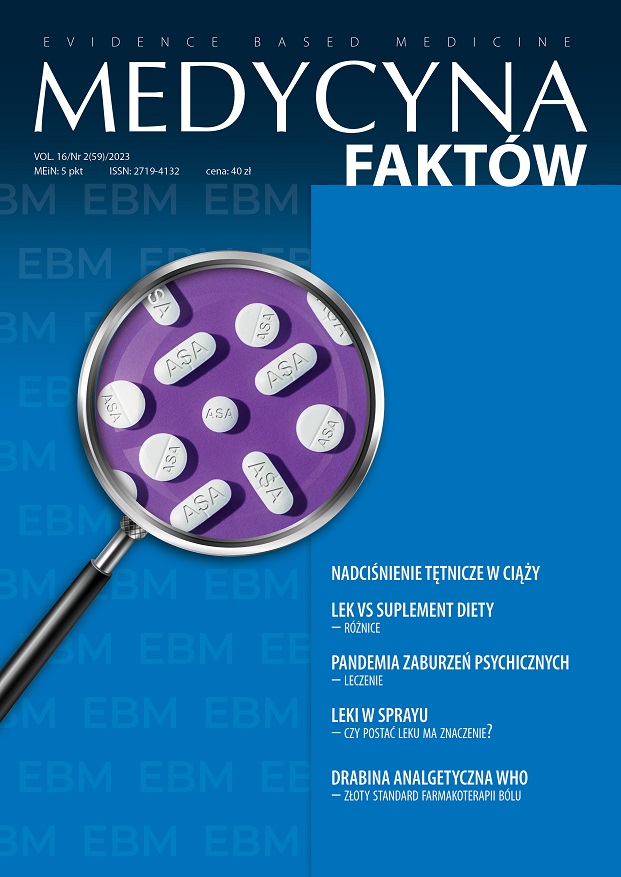Ketoprofen spray with an increased dose – do the form and dose matter? The point of view of a clinical pharmacologist Review article
Main Article Content
Abstract
Inflammatory pain is a consequence of the body’s defensive response to infection, tissue damage or autoimmune process. Acute pain with an inflammatory component includes post-traumatic pain. In the treatment of musculoskeletal pain receptors, local NSAIDs increase significantly. This is due to both the mechanisms of inflammatory pain and the pharmacokinetic profile of topical NSAIDs. Ketoprofen is one of the most commonly used NSAIDs in topical form. The basic mechanism of action of ketoprofen is related to the inhibition of cyclooxygenase activity, which in turn leads to the inhibition of the synthesis of pro-inflammatory prostanoids, in particular prostaglandin E2 (PGE2), which is involved in inducing inflammation and causing pain stimulation. In the practice of pain management, both the form of the drug used and the dose used are important. The paper describes the place of 10% ketoprofen in the form of a skin liquid in the treatment of pain and inflammation.
Article Details
Copyright © by Medical Education. All rights reserved.
References
2. Lanas A, Boers M, Nuevo J. Gastrointestinal events in at risk patients starting non-steroidal anti-inflammatory drugs (NSAIDs) for rheumatic diseases: the EVIDENCE study of European routine practice. Ann Rheum Dis. 2015; 74: 675-81.
3. Sarzi-Puttini P, Atzeni F, Lanata L et al. Pain and ketoprofen: what is its role in clinical practice? Reumatismo. 2010; 62: 172-88.
4. Kantor TG. Ketoprofen: a review of its pharmacologic and clinical properties. Pharmacotherapy. 1986; 6: 93-103.
5. Diaz-Reval MI, Ventura-Martinez R, Deciga-Campos M et al. Evidence for a central mechanism of action of S-(+)-ketoprofen. Eur J Pharmacol. 2004; 483: 241-8.
6. Panerai AE, Lanata L, Ferrari M et al. A new ketoprofen lysine salt formulation: 40 mg orodispersible granules. Trends Med. 2012; 12: 159-67.
7. Sarzi-Puttini P, Atzeni F, Lanata L et al. Efficacy of ketoprofen vs. ibuprofen and diclofenac: a systematic review of the literature and meta-analysis. Clin Exp Rheumatol. 2013; 31: 731-8.
8. Mazières B, Rouanet S, Velicy J et al. Topical ketoprofen patch (100 mg) for the treatment of ankle sprain: a randomized, double-blind, placebo- controlled study. Am J Sports Med. 2005; 33(4): 515-23. http://doi.org/10.1177/0363546504268135.
9. Derry S, Conaghan P, Da Silva JA et al. Topical NSAIDs for chronic musculoskeletal pain in adults. Cochrane Database Syst Rev. 2016; 4(4): CD007400. http://doi.org/10.1002/14651858.CD007400.
10. Derry S, Moore RA, Gaskell H et al. Topical NSAIDs for acute musculoskeletal pain in adults. Cochrane Database Syst Rev. 2015; 2015(6): CD007402. http://doi.org/10.1002/14651858.CD007402.
11. Mazières B, Rouanet S, Guillon Y et al. Topical ketoprofen patch in the treatment of tendinitis: a randomized, double blind, placebo controlled study. Rheumatol. 2005; 32(8): 1563-70.

